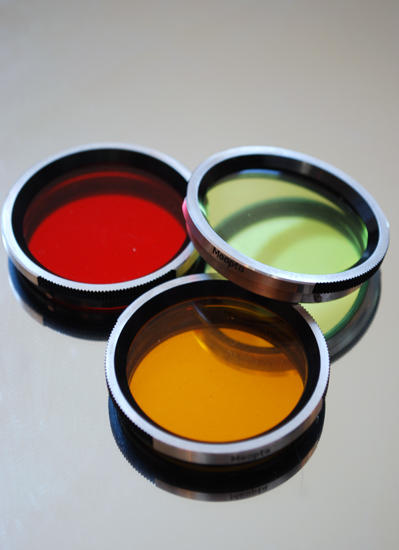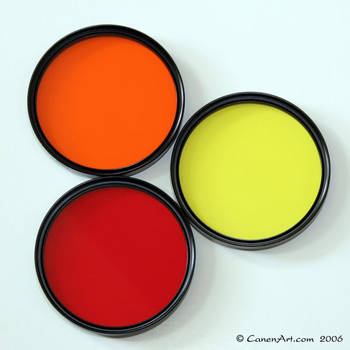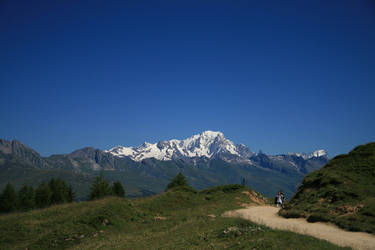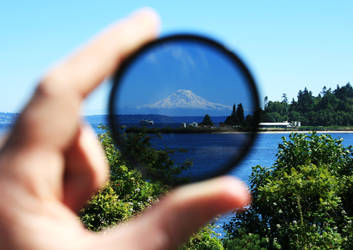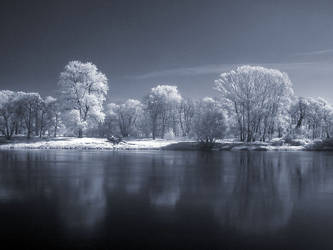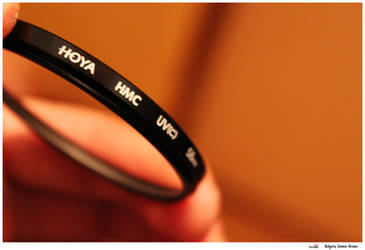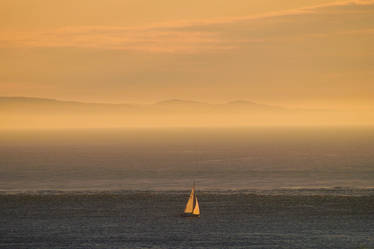"The use of filters, how to pick them and examples of situations where they would be helpful...."
~ moria330Hi moria330, filters are a good way of diversifying your photographic opportunities without spending a great deal of money (though, granted, many of the better quality filters can get to be relatively expensive).
In film photography, filters were used a lot more extensively then they are today thanks to the nature of the medium.
For example colour filters were used for white balance purposes on colour films that were balanced for different light types, so, you could shoot artificial light balanced film under daylight if you had a filter that corrected for it.
Additionally colour filters were used for black and white photography so the film would capture only the spectrum of light you were filtering for, providing emphasis or deemphasis of the features of the subject or scene.
Colour filters aren't nearly as popular today mostly because digital photography has far less need for them, the only exception being with digital black and white cameras (as in cameras that can only capture black and white images), which are, suffice to say, definitely in the minority.
There are three or four types of filters that (as far as I am aware) are the most pertinent to digital photography: Neutral Density and Graduated Neutral Density filters; Polarising filters; Infrared and Ultraviolet filters; and depending on your perspective UV/Haze filters.
Neutral Density and Graduated Neutral Density (henceforth shorted to ND and GND respectively) both block light coming through them. They're referred to as ND filters because they're supposed to block light equally across the spectrum, leaving no colour casts as a result.
Many may wonder why such things are needed at all, particularly if you've spent the money to buy a fast (wide aperture, or low F/number, like F/1.8) lens.
Plain ND filters are useful because they allow you to use longer shutter speeds, particularly during the day time. Long exposure photography is often difficult at best without a plain ND filter, particularly under direct sunlight.
The visual effect of this can be striking, to give an example, you could use a strong ND filter to take a long exposure of a city centre, and the end result would (or at least could) show that city centre to be deserted.
A less extreme use of a plain ND filter is the ability to use your fast lens at its widest aperture under direct sunlight.
A GND has a more specific use, and is less useful for digital cameras thanks to post processing techniques, and has an area of the filter that is filtered and an area that is clear (or unfiltered), and either a small or large transition between those two (often referred to hard and soft, respectively).
Using a GND basically allows a single shot HDR image to be taken, as the highlight area (typically the sky) can be darkened, while the darker foreground can be exposed more normally.
GND's are particularly useful in high contrast landscape scenes, but they tend to rely on the horizon being relatively straight in order for the effect to be best used, hence why post processing HDR techniques can be a better option, in spite of the requirements that HDR photography often needs.
Polarising filters do exactly what they say, they polarise the light coming into the sensor. This typically as the effect of increasing colour saturation, darkening the sky, and removing reflections, if the filter is rotated the right way.
This should have several obvious advantages.
A polariser will also work as a ND filter, as most polarisers reduce light entering the lens by 1.5 to 2 stops (so, say a photograph can be taken at 1/200th of a second, all the other settings being equal, with the filter, you'd need to shoot at 1/50th of a second).
Infrared and Ultraviolet filters, and by far, Infrared filters are the most popular of the two mentioned, rely on an image sensors natural sensitivity to both of those spectrums of light.
Infrared and Ultraviolet filters should appear black to the naked eye, though some near-IR filters may appear to be a very dark red, particularly when viewing a bright light source with one.
Because both filters block out all or nearly all visible light, exposures can take upto several minutes, depending on how much infrared light has been blocked on the image sensor (the reason why manufacturers block IR is because it can and does lower overall image quality).
Ultraviolet filters are much less popular, because, while the image sensors found in cameras tend to be sensitive to it, very little UV light manages to reach the sensor thanks to the lens itself naturally blocking most UV light. As such, special UV lenses or known UV friendly lenses are needed for UV photography. It should be noted, also, that only certain lenses work well with IR photography too, some lenses create a 'hot spot', which is actually literally true.
In both cases, it should be noted that IR and UV light have different focussing points than visible light does (which is part of the reason why IR sensitivity reduces image quality in visible light images), as some focus adjustments are often required for either. This can be mitigated some what by using a narrower aperture to increase depth of field, but doing so does mean you'd have to increase exposure time even more.
Finally, please don't confuse an Ultraviolet filter with a UV/Haze filter, they're about as opposite in purpose as is feasible. A UV/Haze filter seeks to block UV light (as opposed to an Ultraviolet filter blocking visible light), and as the name suggests, will reduce 'haze'. As mentioned, most lenses naturally block most UV light anyway, and the image sensor is typically less sensitive to UV light than it is to IR light. So most UV/Haze filters essentially serve as a protection for the lens.
Using a UV/Haze filter is a somewhat divisive subject, as they can have some visual impact on an image, but, can actually reduce the quality of the image by being another piece of glass (thus two air/glass interfaces) the light has to go through, particularly if the quality of the glass is not very good unless you spent a lot on the filter.
Naturally, which ones you choose depends on what you're photographing and what you want to achieve. But, personally, I'd recommend getting a Polarising filter and a ND filter, as both can open up many creative opportunities.
~ sine-out
:bigthumb196612498:>
